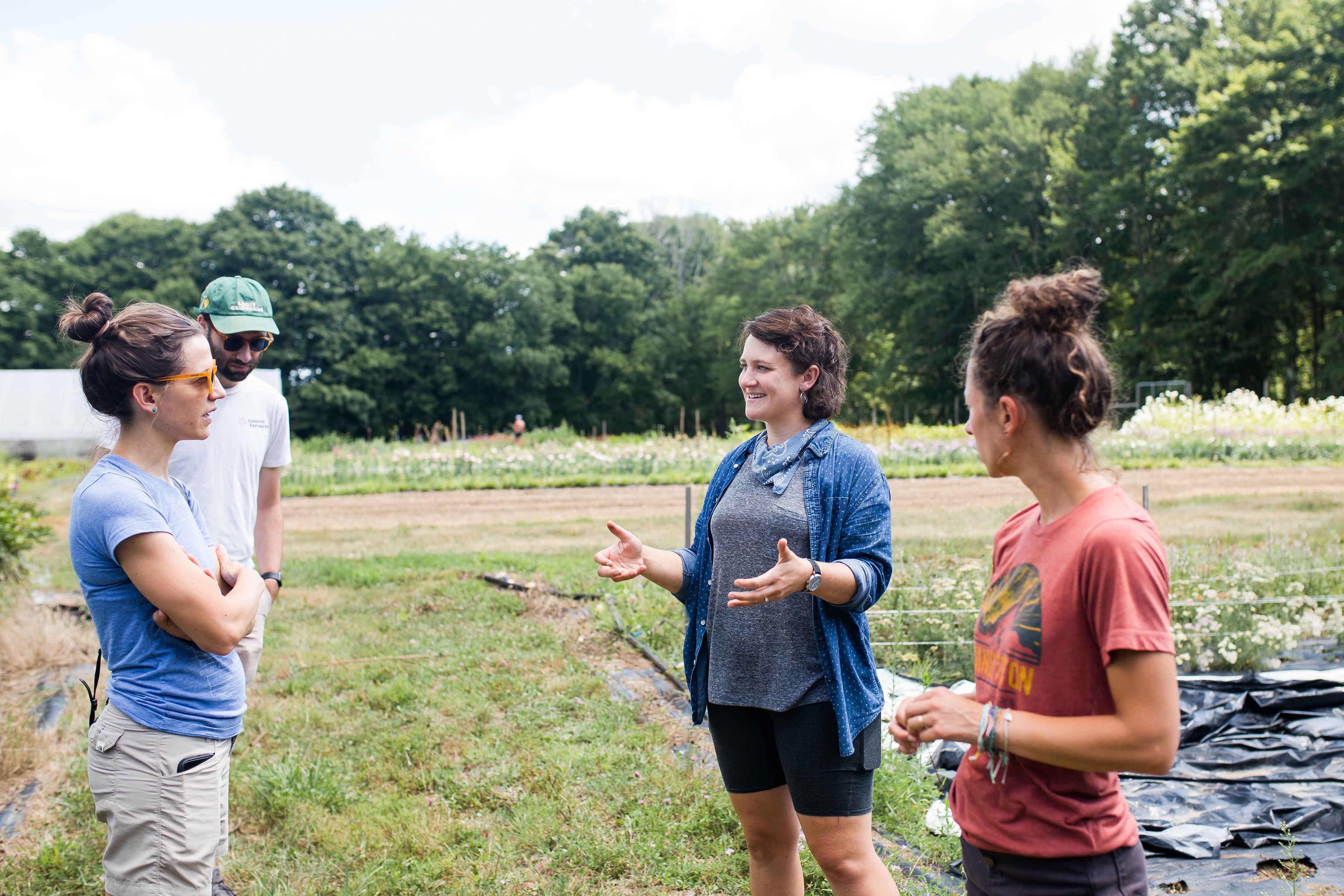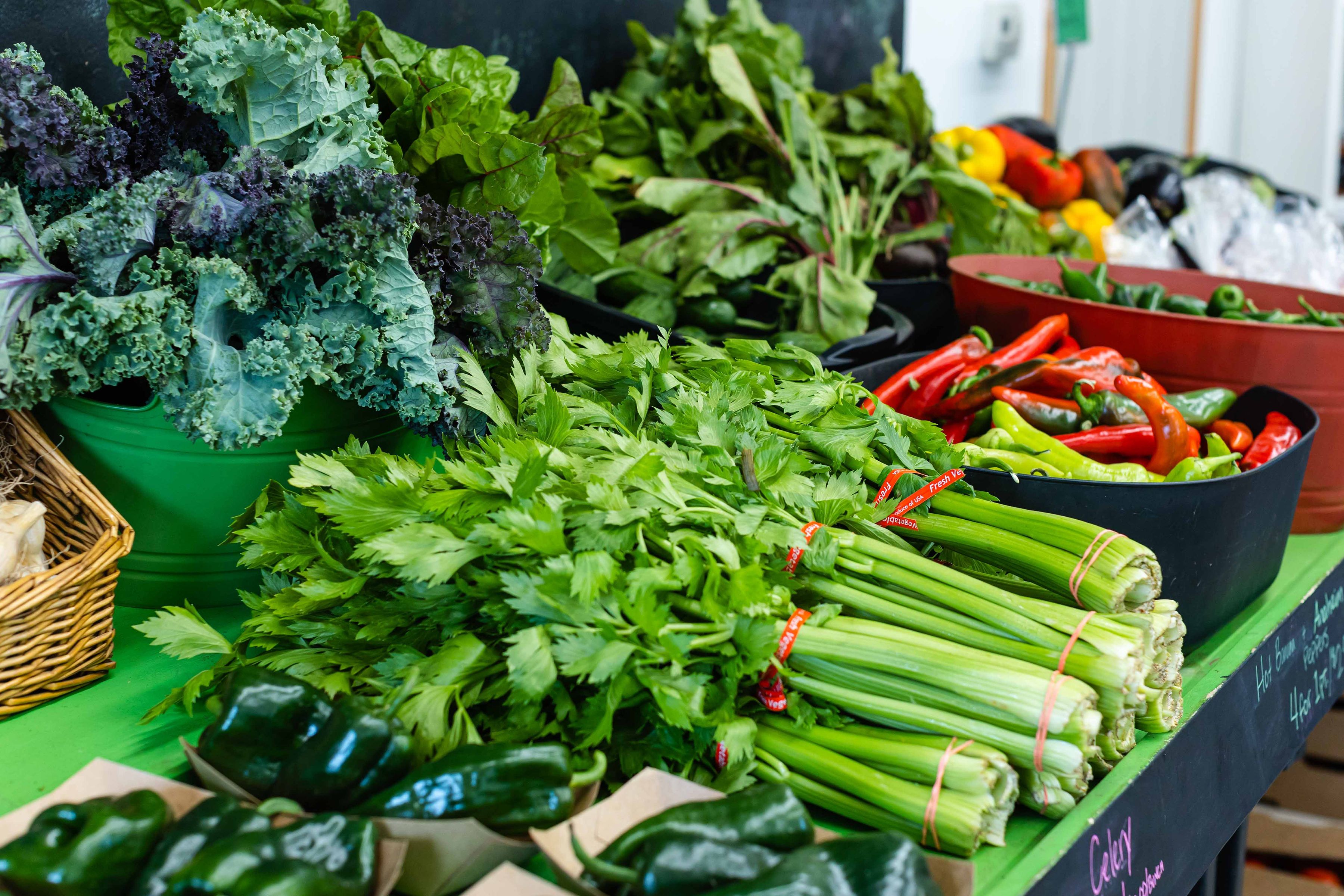At Rooted, we work with dozens of hubs, co-ops, and farm collectives across the country. We’re often approached by individuals or teams wondering if selling collaboratively makes sense for them, or if they are ready to dive in. To help you and your team evaluate these decisions, we’ve put together discussion prompts and a printable worksheet to accompany our podcast episode with Slow Flowers on this topic.
The benefits of collaborative selling in the form of hubs, co-ops, or collectives are vast: optimized logistics, broadened buyer reach, tapping into economies of scale via pooling of product and resources, and more. That said, before you start selling collaboratively, you should be able to address the following questions:

1. Who
What does your core team look like? Who will handle what roles?
You should have at least two leaders to help provide redundancy and share the management load. Having multiple people involved helps you avoid making decisions in a vacuum and ensures multiple perspectives on challenges you'll face. Experience matters: having a background in farming is crucial, and having worked in organizations to achieve team-based goals is also important. We've found that including someone excited about building new business relationships is a huge indicator for success—particularly in B2B sales, where relationships are built on trust.
Who are your potential members?
Consider the growers you hope to include in your hub. Do you already have commitments from producers, or are you still recruiting? What diversity of products and production methods do they bring? Understanding your member base early helps you design systems and standards that work for everyone.
How will you make decisions as a group?
As you transition from individual to group mindset and planning, you’ll need to determine your legal entity structure and establish clear decision-making processes. Having these frameworks in place early prevents confusion and conflict down the road.
2. What
What are the problems you are trying to solve?
Do you have buyers asking for simplified logistics? Do you have a group of farms who are duplicating each other’s delivery routes? Do producers in your area have a desire to specialize their production, or meet buyers’ volume needs?
Having clarity around the key challenges that you are working to solve will help you remain focused in the planning process. While excitement from producers and buyers is a great sign, attempting to solve too many challenges in your first year can spread you too thin. Start small and establish a strong foundation with systems that work. You won't get everything right the first time—and that's okay! You'll need to try things and revise them based on what you learn, which is much easier to do when you're starting with a manageable scope. Build gradually and expand as you grow.
You'll also want to establish quality standards early on. What are your collective expectations for product quality, grading, food safety, and presentation? Having clear standards helps maintain buyer trust and ensures all members are on the same page.
3. When
Is now the right time? In which season are you hoping to launch? Have you done enough diligence to prepare?
Consider the time of year that you are hoping to launch. Not all seasons are created equally for getting a project like this off the ground! Using your production season to collect feedback from buyers about needs and preferences, and the fall to cultivate relationships with your grower members, can allow you and your team to spend the quieter winter months putting all of the pieces in place for a spring launch, which can time well for buyers’ reinvigorated interest in locally-sourced, farm-fresh products.
You will also want to consider the amount of experience that your core team and early members have selling into these markets. Ensuring that your group has spent time understanding buyers’ needs and expectations can prove invaluable before adding the additional layer of aggregation complexity.
4. Where
Do you have locations in mind? Are there specific markets or geographies that you are targeting or looking to service? Are you hoping to expand your geographic reach through a collaborative approach?
This very much depends on the model that you have chosen - delivery versus pick up versus a hybrid model. If you are planning to be delivery-only, you will want to consider where product is being received and orders are being packed. If your model includes a physical market, you will want to consider proximity to your buyers and loading/unloading and parking accommodations.
Market assessment is crucial at this stage. Ensure you understand what customers want, current pricing, and genuine market needs rather than assumptions.
5. Why
Is there a particular mission that you are passionate about? Or a particular group you are looking to lift up?
Understand – and be honest about! – the reasons that you and your team are getting into this. Running a producer hub is a marathon, not a sprint, so it’s essential that you are clear on your ‘why.’ This is going to power you forward on those more difficult days, and it can also serve as a key differentiator as you message yourselves to buyers.
Don’t just take our word for it! This powerful Ted Talk from Simon Sinek spells out just how crucial it is for organizations to develop clarity around this question: Starting With Why – How Great Leaders Inspire Action
6. How
How will you actually make this work financially and operationally?
Before launching, you need to understand the financial realities of running a collaborative operation. This includes considering startup capital, infrastructure needs, ongoing operational costs, and how you'll structure fees to sustain the business.

Ready to Get Started?
Use this worksheet as a discussion tool with your core team. The more thoroughly you can answer these questions before launching, the stronger your foundation will be. Remember, it's okay if you don't have all the answers right away—but you should have a plan for how you'll find them.
These can be tough but necessary conversations to have before starting. Addressing questions about money, roles, decision-making, and expectations upfront may feel uncomfortable, but working through them now will help you avoid conflict and misunderstandings down the road. The time you invest in these discussions is an investment in your collective's long-term success and sustainability.
Building a successful hub, coop, or farm collective takes time, dedication, and careful planning. By working through these questions together, you'll be better positioned to create a sustainable, impactful collaborative business that serves both your growers and your buyers well.
Categories

About the Author
Rooted Farmers
The Rooted Farmers Team is happy to bring you content that we hope provides value. The topics covered range from farming and running a hub, to sales, marketing, and all things related to building your business, to the unique challenges faced by growers. Our philosophy in sharing this content is that we are always in a position to learn; embracing this mentality will only help us to grow, both within our businesses and personally. If there is a topic that you feel would be of value to the Rooted Farmers community, we encourage you to share your ideas with us by sending an email to: reachout@rootedfarmers.com
